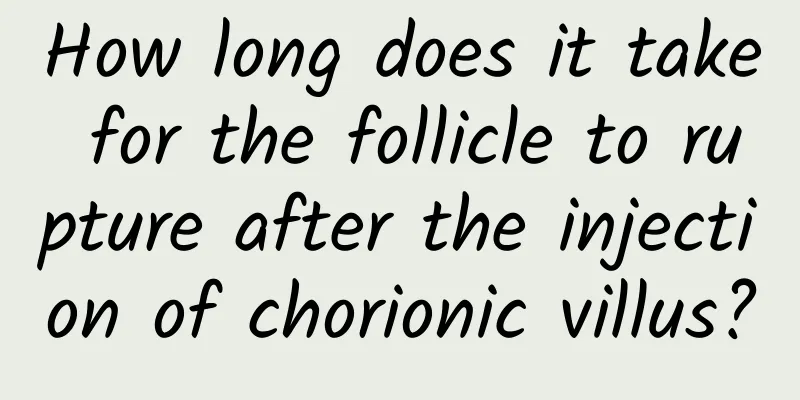What are the symptoms of high blood clots?

|
If you have blood clots, it will have a great impact on your health. The symptoms will vary depending on the location of the blood clot. For example, cerebral thrombosis, lower limb venous thrombosis, etc. are all common manifestations of blood clots. In addition, venous thrombosis, arterial thrombosis, and microcirculation thrombosis are all common types of blood clots. You must strengthen prevention in your daily life, as blood clots have a great impact on human health. What are the symptoms of high blood clots? Thrombus can be divided into venous thrombosis, arterial thrombosis and microthrombosis according to the anatomical site in the body. It can also be divided into platelet thrombus, red blood cell thrombus, mixed thrombus and fibrin thrombus according to the composition of the thrombus. Some are divided into white thrombi, red thrombi and mixed thrombi according to the color seen by the naked eye. Clinically, they are often classified according to anatomical sites to facilitate clinical diagnosis and treatment. The main lesions of thrombosis are vascular occlusion and blood flow obstruction, which cause ischemia, hypoxia and even necrosis of the related vascular-controlled tissues, resulting in symptoms of corresponding tissue and organ dysfunction. Different clinical manifestations may occur depending on the location, size, speed, and establishment of collateral circulation of thrombosis. 1. Venous thrombosis It is a common thrombosis in clinical practice, usually caused by slow blood flow or stasis. The characteristics of venous thrombosis are that it contains a large number of red blood cells and fibrin, and the platelets show aggregation and degranulation changes, and their number is small; the thrombus looks like a whole blood clot in a test tube, and its color is dark red, and it is called a red thrombus. Venous thrombosis often causes occlusion of the vascular lumen, so the proximal end of the thrombus is mainly composed of red blood cells, and the tail end often has new platelets adhered to the surface. 2. Arterial thrombosis Also known as white thrombus, it is mainly composed of platelets and fibrin. It usually occurs in areas where blood flow is faster and the blood vessel wall is damaged, or in areas with abnormal blood vessels. Platelets only adhere to the diseased blood vessel walls to form platelet thrombi. When blood passes through, fibrin may be formed locally and attached to the surface of the platelet thrombi. 3. Microcirculatory thrombosis Fibrin thrombus, or transparent thrombus, is mainly composed of fibrin deposition. Microvascular thrombus can cause intravascular coagulation due to microcirculation disorders; it can also be caused by detached emboli blocking small blood vessels, or certain factors directly damage microvascular endothelial cells, leading to fibrin deposition. Common ones include DIC, hemolytic uremic syndrome, and thrombotic thrombocytopenic purpura. |
<<: Early symptoms of postpartum thrombosis
>>: How long does it take to recover from deep vein thrombosis?
Recommend
How to treat the skin disease tinea pedis
Tinea pedis is a skin damage caused by fungal inf...
The efficacy and contraindications of spur root
Spur root has the effect of cooling blood and sto...
What are the methods of dietary therapy to nourish the stomach?
Nowadays, many people suffer from stomach problem...
What is the disease of pain and weakness?
Many people will feel soreness, pain and fatigue ...
Add a treasure to vinegar to drive away all minor illnesses
In addition to seasoning, vinegar can also solve ...
What to do if your shoulder hurts
There are many common problems in life. When solv...
How long does it take for tinnitus due to tympanic membrane perforation to heal?
The ear is a very important organ for the human b...
Benefits of armpit lymphatic detoxification
There are many benefits of axillary lymphatic det...
What should you pay attention to after scraping?
The so-called scraping therapy refers to the use ...
The role of Taxus chinensis in traditional Chinese medicine
Taxus chinensis var. southernis is also known as ...
Can I have a natural birth if I have gynecological diseases?
Gynecological diseases are very common female dis...
What to do if there are small acne particles on the face
There are some small acne particles on the face, ...
How to clean toxins from the blood, drink more green tea!
Blood toxins make it profane based in the blood a...
What is the reason for acne on the right side of the forehead?
The health of the forehead is very important for p...
What are the Chinese medicine umbilical therapy weight loss formulas? How to lose weight
There are many ways to lose weight, but none of t...









